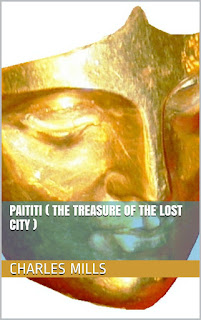Highclere Castle
Where is the
real Downton Abbey? The setting for the
iconic television show is Highclere Castle in Berkshire, England. Few fans of the show may be aware of the
castle’s connection with ghosts and the occult.
The castle’s
best-known resident was the Fifth Earl of Carnarvon who financed the expedition
to find the tomb of Egypt’s King Tut. In 1922, the Earl called archaeologist Howard Carter to
Highclere to tell him that the funds had dried-up for further excavations. But
he agreed to a final dig. On the 4th of November, Carter discovered a staircase
beneath the sand leading to the sealed tomb of Pharaoh Tutankhamun. The Earl travelled
to Egypt immediately. Lord Carnarvon and Howard Carter broke the seal of the mummy’s
tomb together.
The Earl of Carnarvon didn’t
live to see Tutankhamun’s most precious treasures removed from the burial
chamber, he died at the Continental Savoy hotel, Cairo, in April 1923. Some said he was the victim of the “Mummy’s
Curse.” At the very moment
of Lord Carnarvon’s death all the lights in Cairo went out and at his English
home Carnarvon’s dog let out a great howl and dropped dead.
Though the curse is scoffed
at by many, Lord Carnarvon himself might well have believed in the possibility
of such a curse. Carnarvon was
a believer in spiritualism and the occult. He was an active member of the
London Spiritual Alliance. On numerous occasions Carnarvon organized séances in
the East Anglia Room at Highclere Castle.
In his published memoirs the sixth Earl of Carnarvon says that his father became “keenly interested in the occult”. “My father said, 'If we sit round the table holding hands, I believe we shall achieve a levitation.' 'What does he mean?' I whispered to my sister. 'I think he hopes the flowers on the table will rise several feet into the air,' she replied, and they did.”
The current Countess of Carnarvon recounts having seen the ghost of a footman who committed suicide in the castle. “I turned and saw a man coming towards us out of the gloom,” she explained, “He seemed slightly undefined.” At that point, she told her son, who was driving a toy car, to go faster, and they ended up crashing through a door. The unexplained figure, however, just stayed at the doors watching them. After the encounter, Lady Carnarvon asked an Anglican monk to bless the castle. After the monk blessed the property, she said that she never saw the ghost again.
The
footman isn’t the only ghost that has been seen at the castle. Lady Carnarvon’s
father claimed to have seen a “well-dressed lady” who greeted him by saying,
“good evening”.










